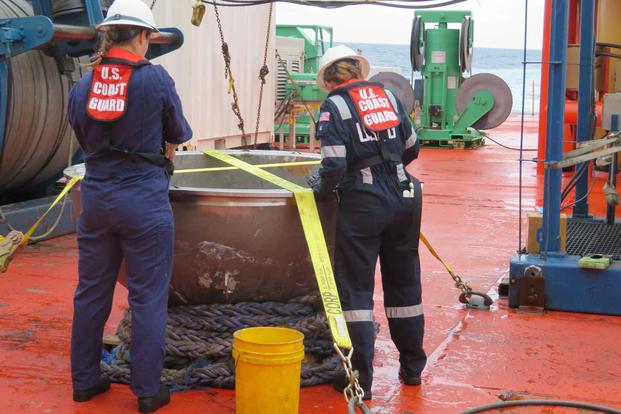The U.S. Coast Guard has completed recovery of the Titan submersible, including collecting additional "presumed human remains," after the craft and crew were lost in June during an expedition to the Titanic wreck, the service announced Tuesday.
Marine safety engineers with the service's Maritime Board of Investigation recovered debris, including the remains and the Titan's titanium end cap, from the floor of the North Atlantic on Oct. 4, according to the service.
The remains were "carefully recovered" from within the detritus and will be transported for analysis by medical experts, Coast Guard officials said.
Read Next: In Israel Conflict, US Military Warns Others to Stay Out, But No 'Boots on the Ground' for Now
Five people died in the expedition that launched June 18 to view the Titanic, more than two miles below the ocean's surface. The trip ended tragically when the submersible suffered what was later determined to be a catastrophic implosion.
Those who died included Stockton Rush, the submersible's pilot and chief executive officer of OceanGate Expeditions, the company that operated the tour; Titanic expert Paul-Henri Nargeolet; Pakistani businessman Shahzada Dawood and his son Suleman Dawood; and British adventurer Hamish Harding.
Suspected human remains were first recovered in late June shortly after debris of the Titan was located and recovered from the seafloor, at a depth of more than 12,000 feet.
The submersible's disappearance within two hours of its attempt to explore the Titanic sparked a multiday, multinational search-and-rescue operation that morphed four days later into a search-and recovery-operation when the Coast Guard announced that debris had been discovered.
The service said the Titan had experienced a "catastrophic loss of the pressure chamber" during its descent.
The salvage mission was conducted under an agreement with the U.S. Navy Supervisor of Salvage and Diving, and in partnership with the U.S. National Transportation Safety Board and the Transportation Safety Board of Canada.
According to the Coast Guard, the Marine Board of Investigation will analyze and test the debris at a U.S. port, which it did not name.
The Marine Board of Investigation also plans to schedule a joint evidence review of the debris to "determine the next steps for necessary forensic testing" and will continue analyzing evidence and interviewing witnesses ahead of an expected public hearing.
The tragedy raised questions about the safety of submersibles and private undersea exploration operations. Shortly after the incident, Coast Guard Capt. Jason Neubauer, the service's chief investigator, said the results of the investigation could improve the safety of submersibles and recreational submarine craft.
"My primary goal is to prevent a similar occurrence by making the necessary recommendations to advance the safety of the maritime domain worldwide," Neubauer said during a press conference June 25.
OceanGate Expeditions charged up to $250,000 to explore the fated cruise ship Titanic, which famously hit an iceberg on April 14, 1912, and sank, killing more than 1,500 passengers and crew members.
The Coast Guard will update the public on the Marine Board of Investigation's progress on its Titan submersible web page. Anyone wishing to provide information that may assist the Coast Guard MBI can submit it to accidentinfo@uscg.mil.
-- Patricia Kime can be reached at Patricia.Kime@military.com.
Related: Here's How the Military Is Helping Search for the Lost Titanic-Bound Sub













